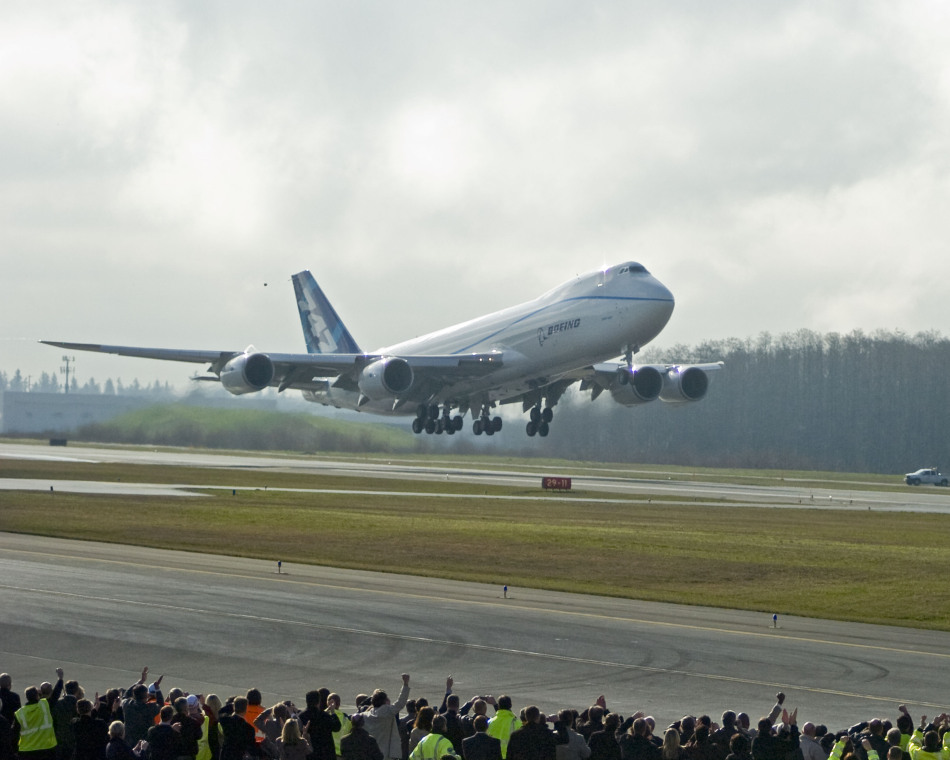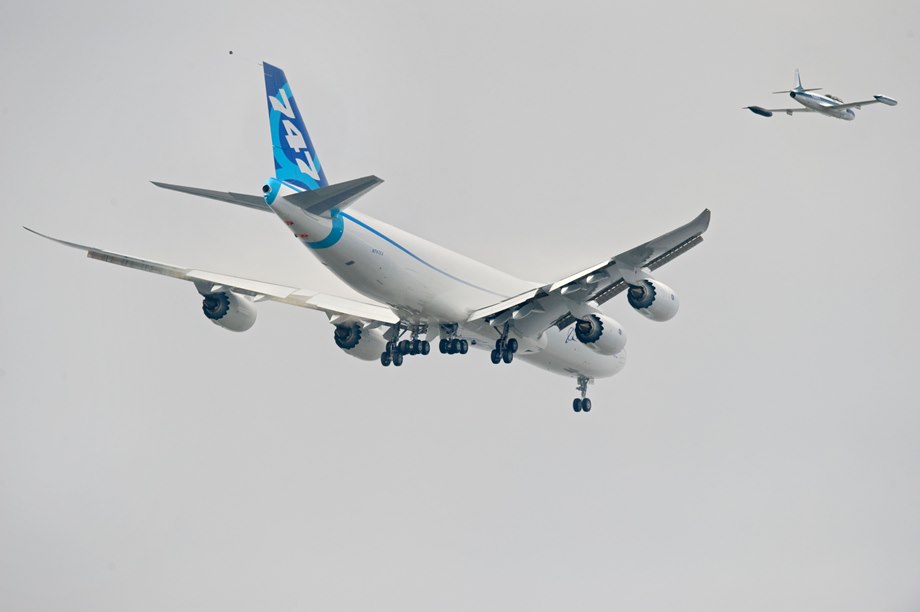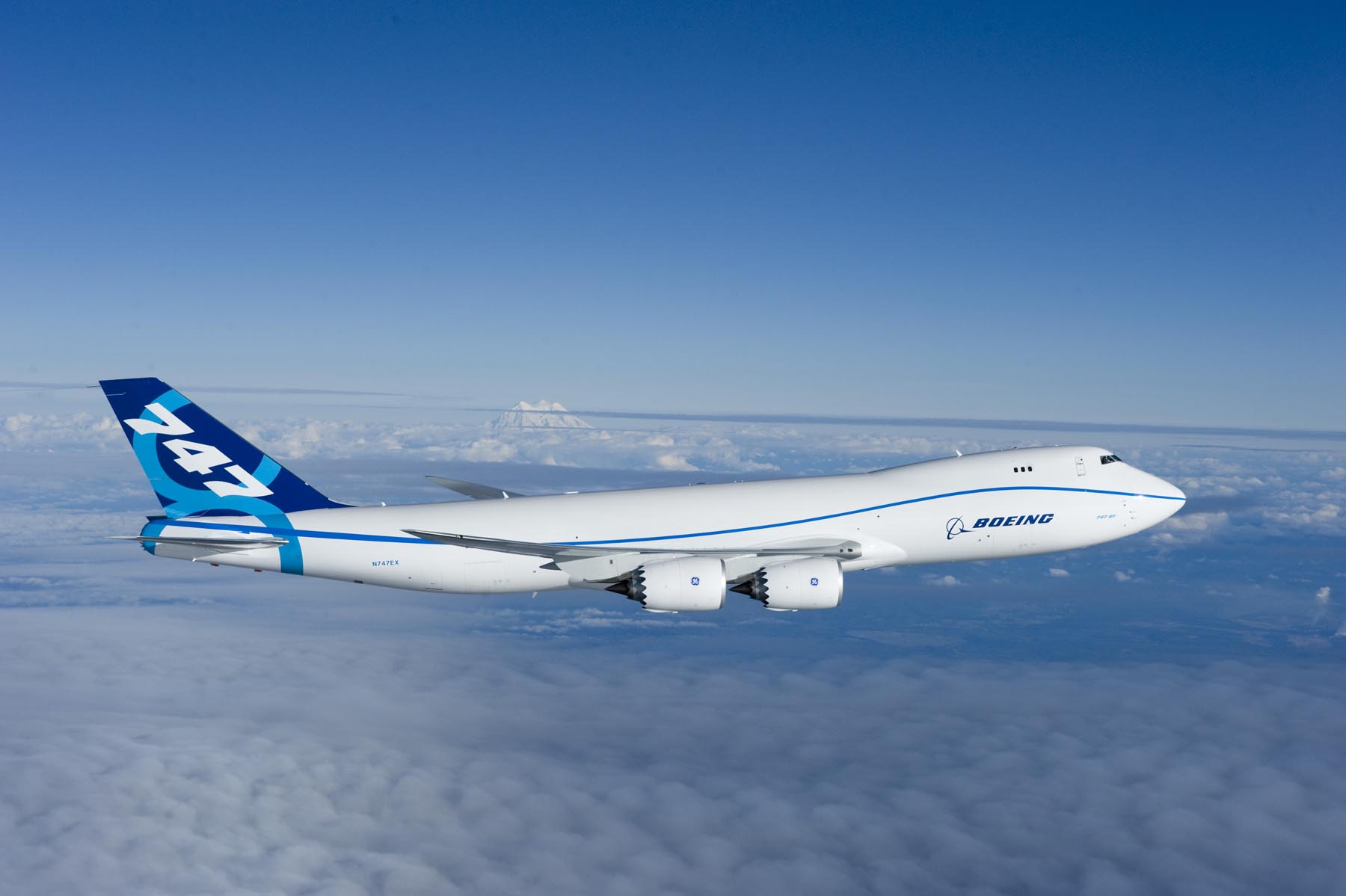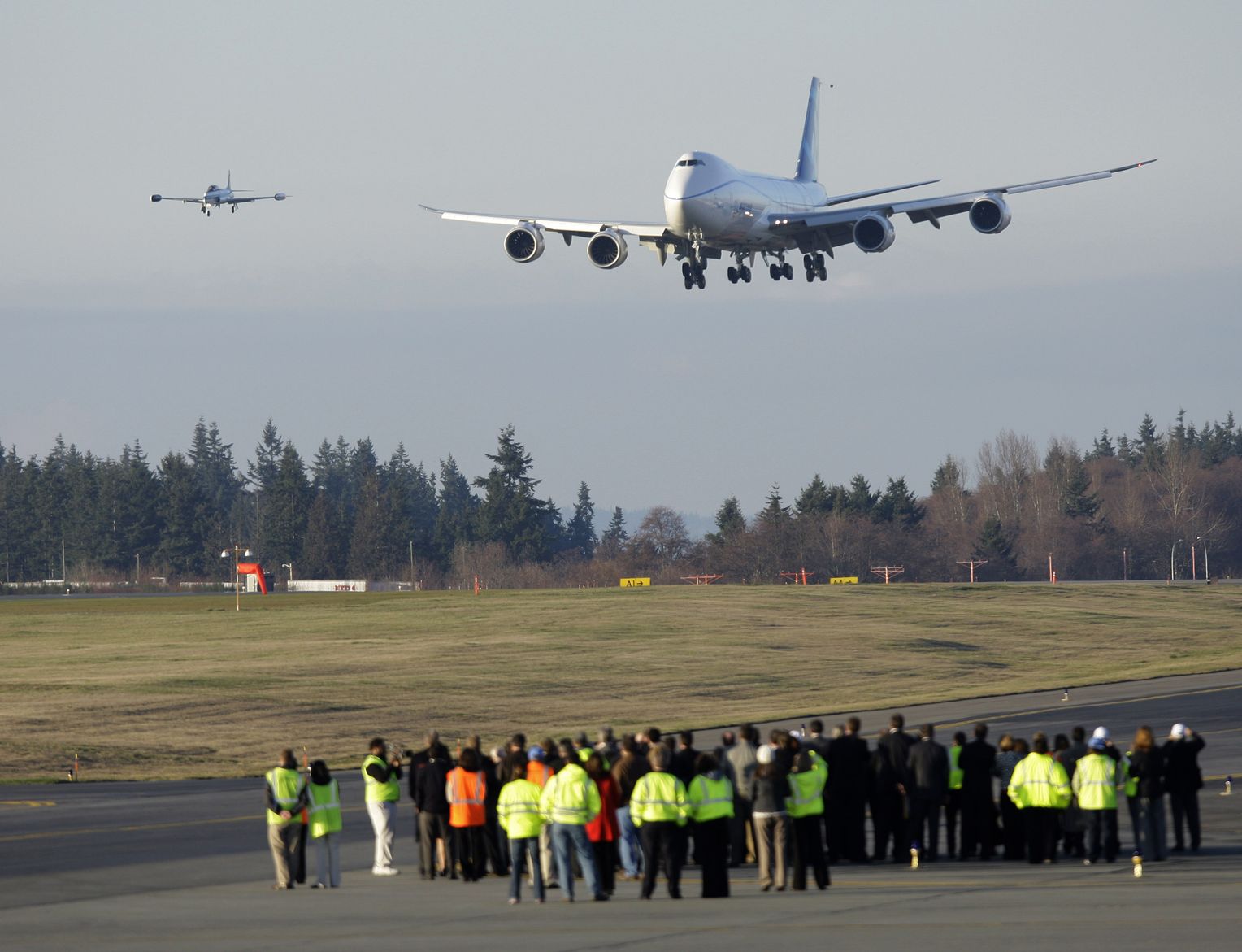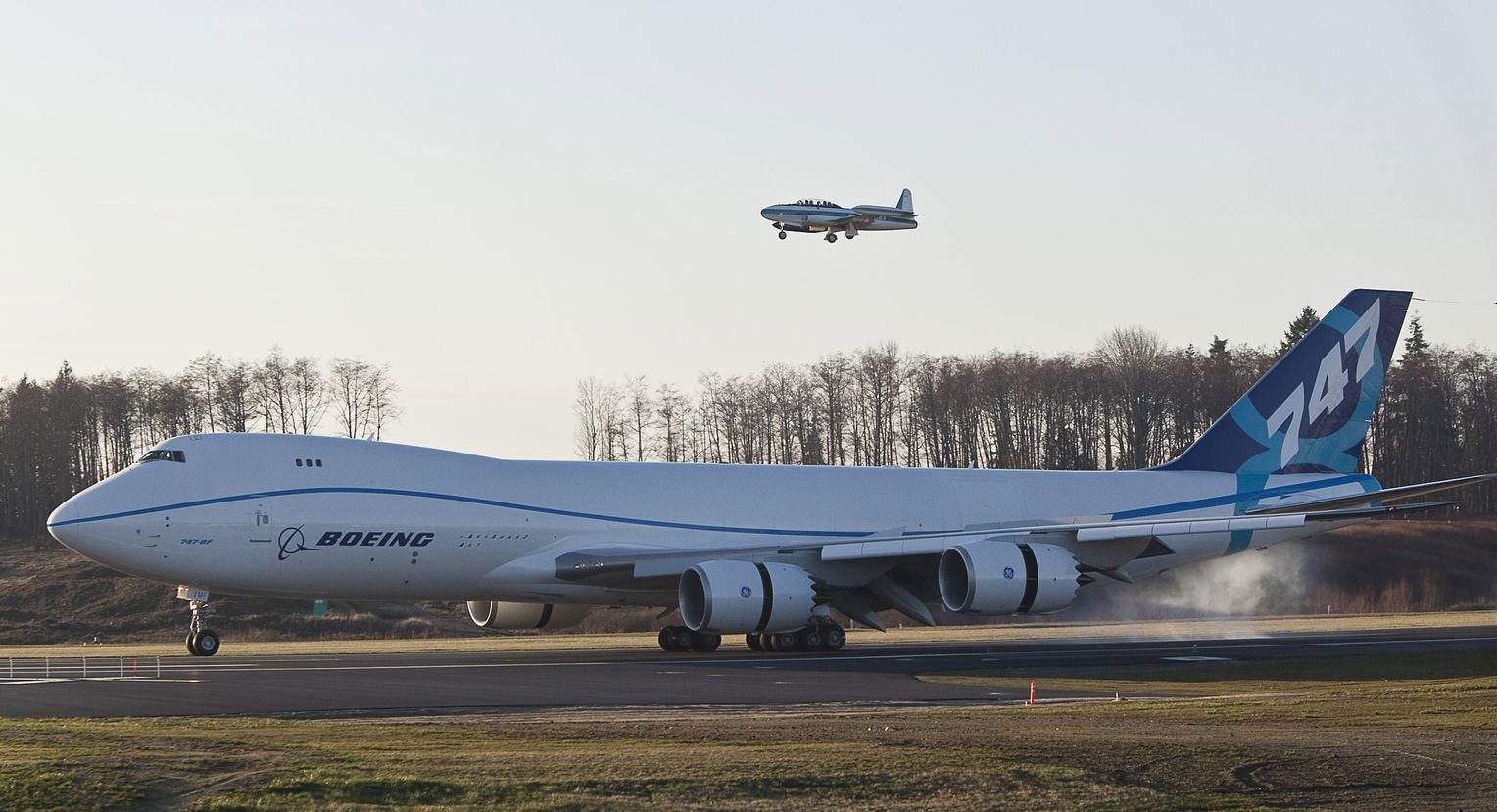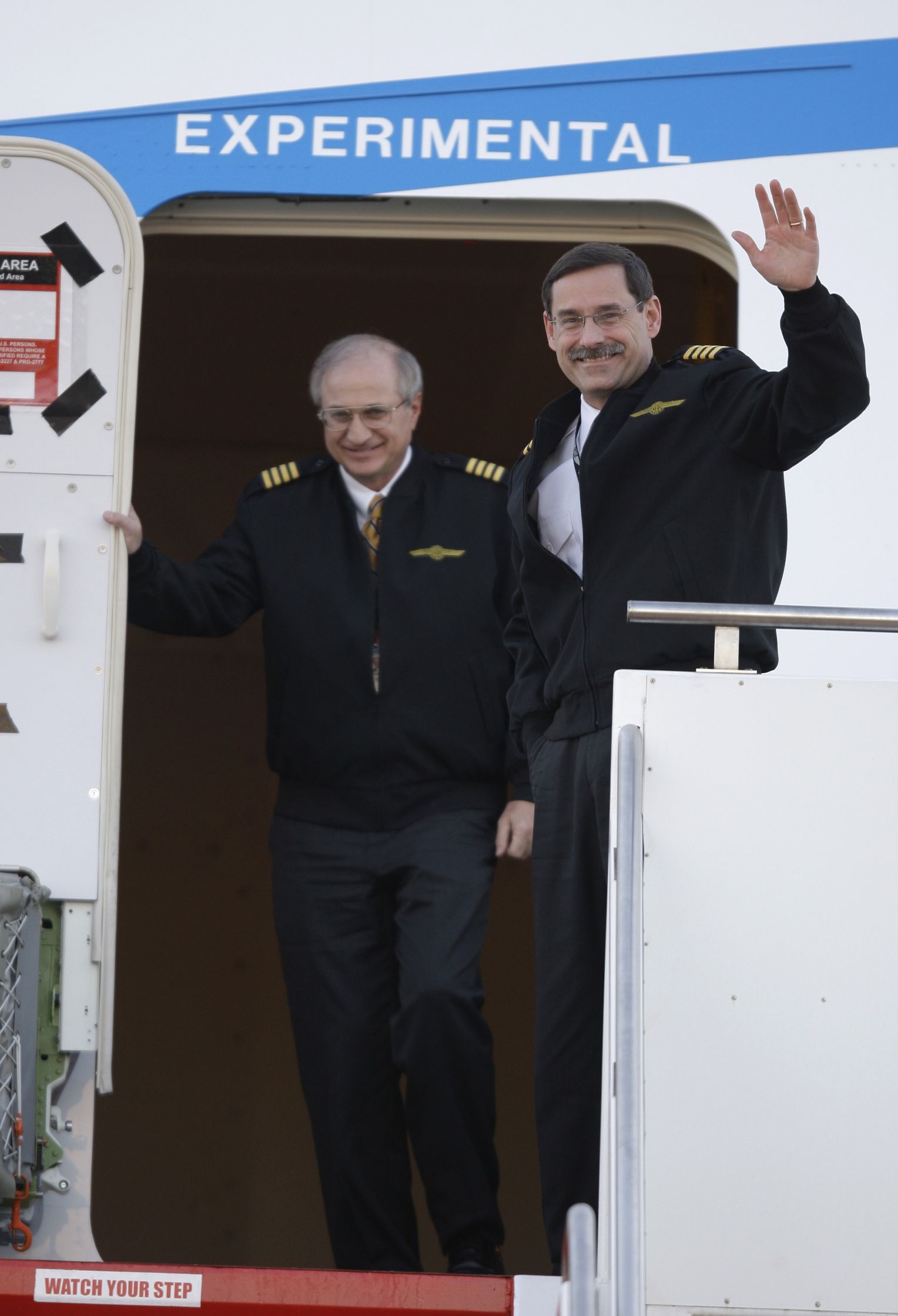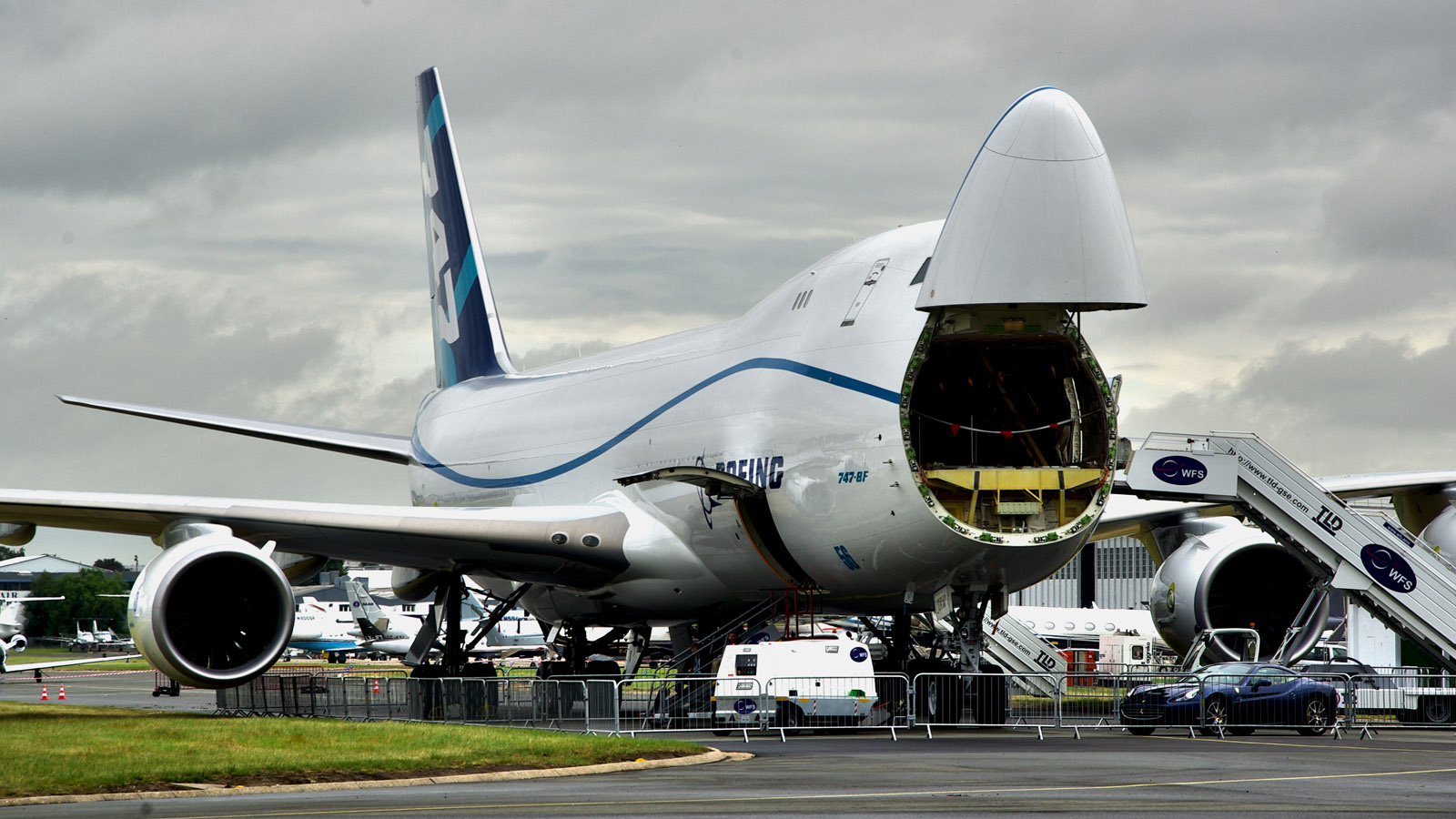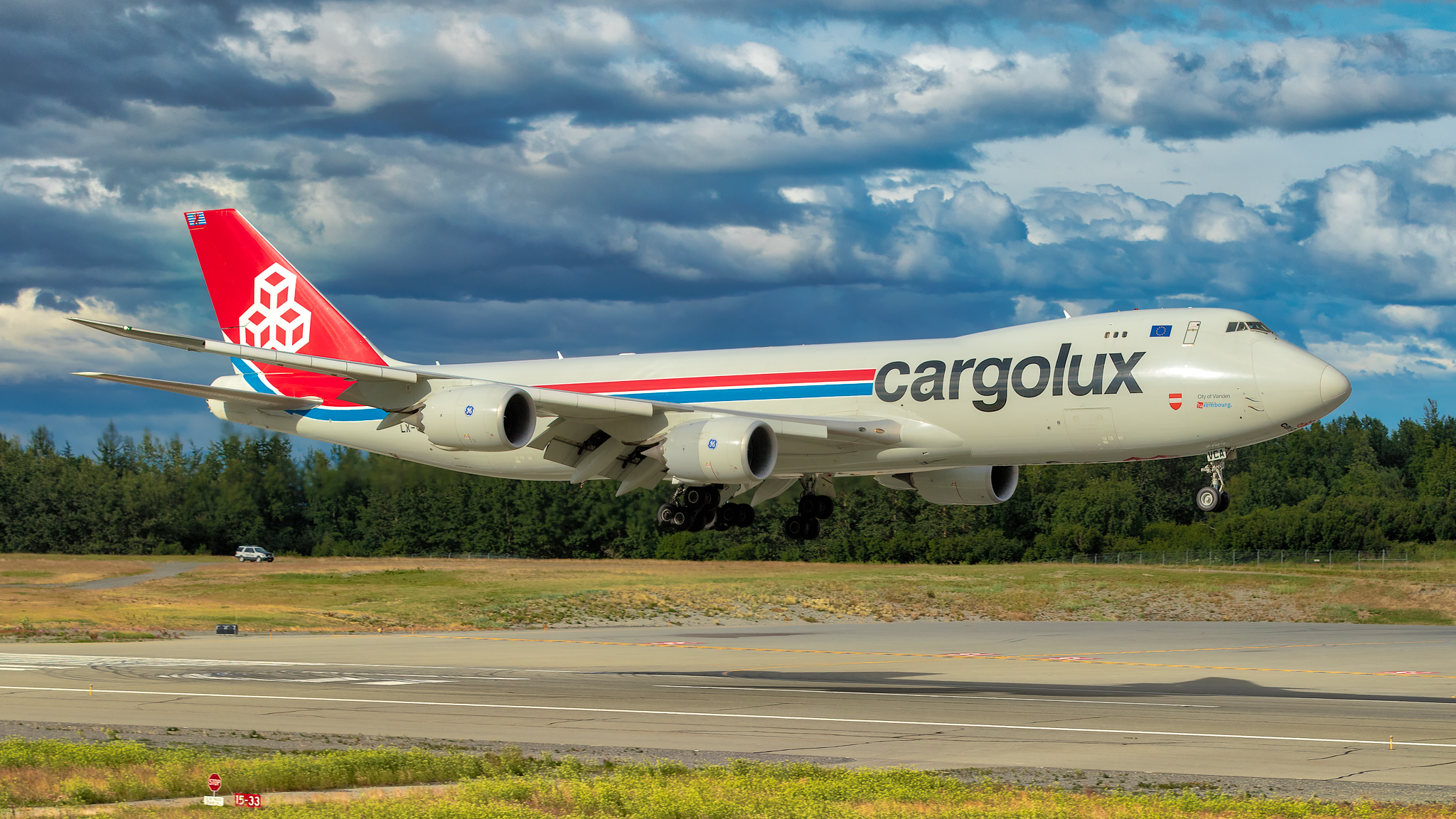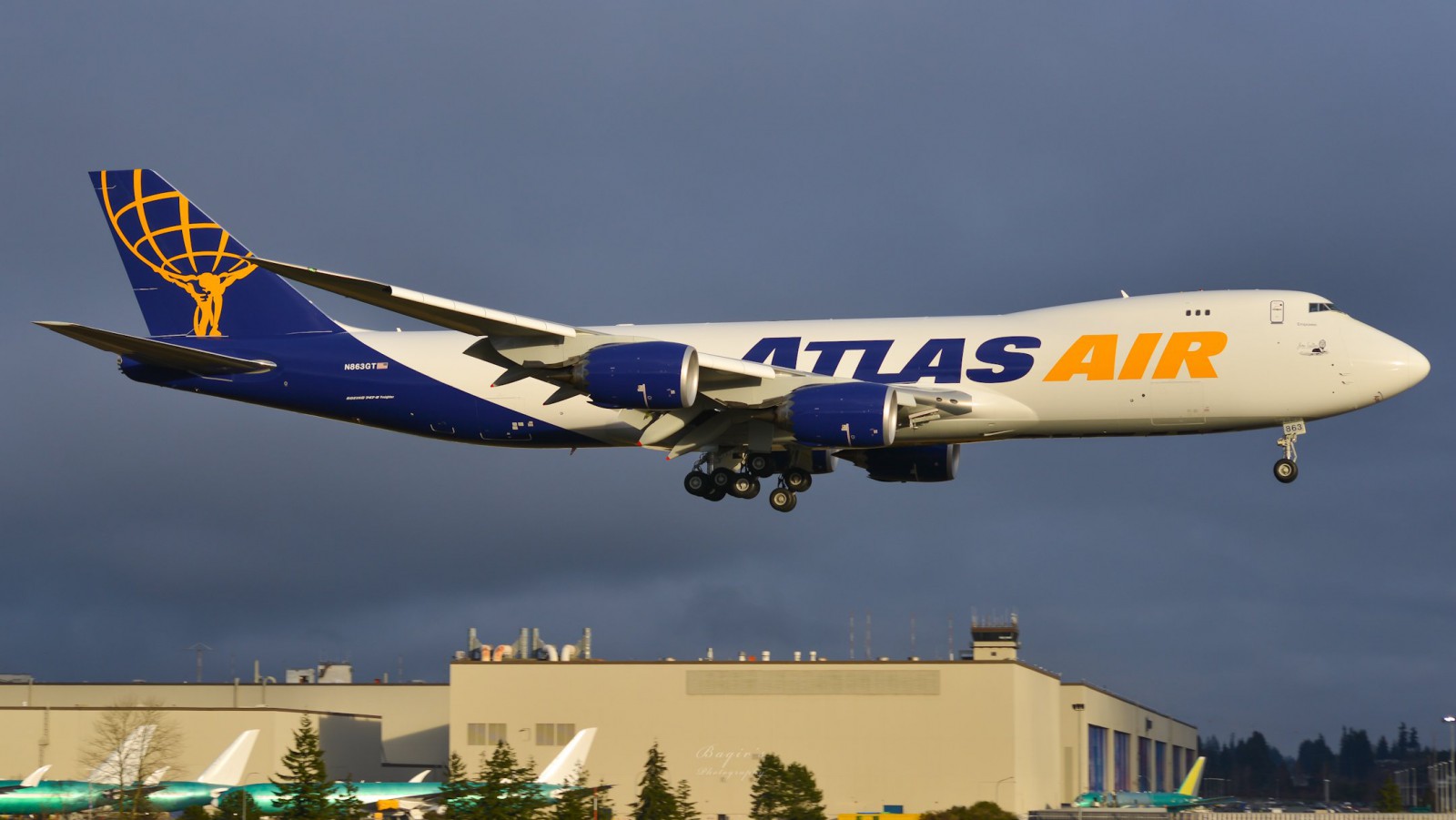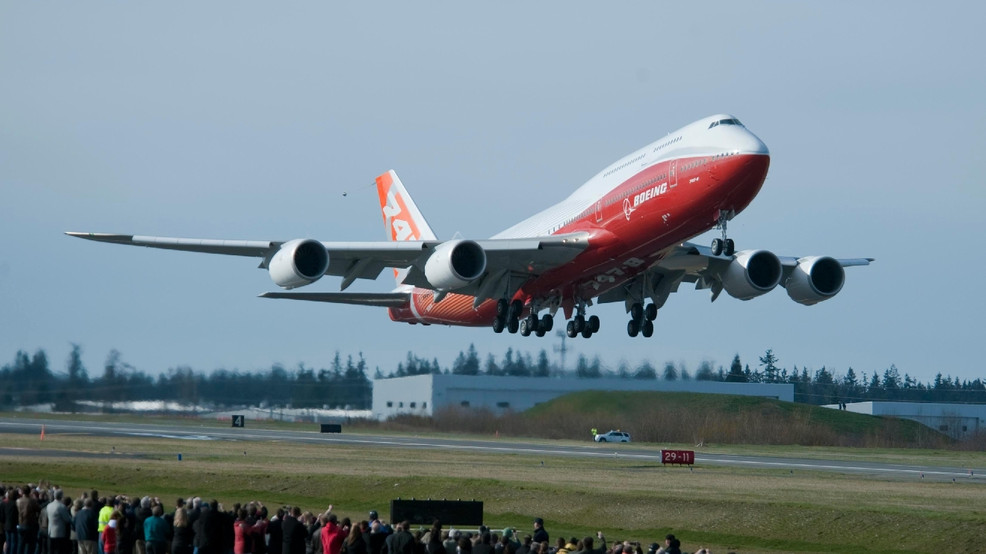
20 March 2011: At 9:58 a.m., the prototype Boeing 747–8 International, N6067E, (Line Number 1434) took off on its first flight from Paine Field (PAE), Everett, Washington. Chief Test Pilot Mark Gregory Feuerstein was in command, with co-pilot Captain Paul Stemer. During the flight the 747-8i flew to 20,000 feet (6,096 meters) and 250 knots (288 miles per hour/463 kilometers per hour). Four hours, 26 minutes later, at 2:24 p.m., the prototype landed at Boeing Field (BFI) in Seattle.
Captain Feuerstein said, “It was a great flight. Hard to beat the weather we had today—in fact I’m still a little surprised it worked out the way it did. The airplane was ready. . . and a lot of people. . . put a lot of work into making this airplane what it is. . . This is a testament to how prepared the airplane was. The airplane is actually ready to go fly right now.”
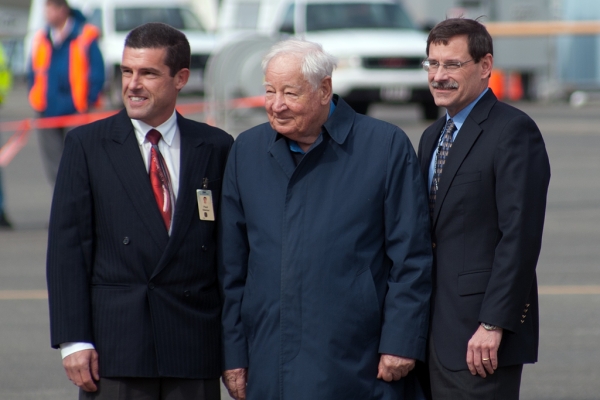
The Boeing 747-8i International is the final passenger variant of the 747 series. 155 were built before production came to an end in 2022.
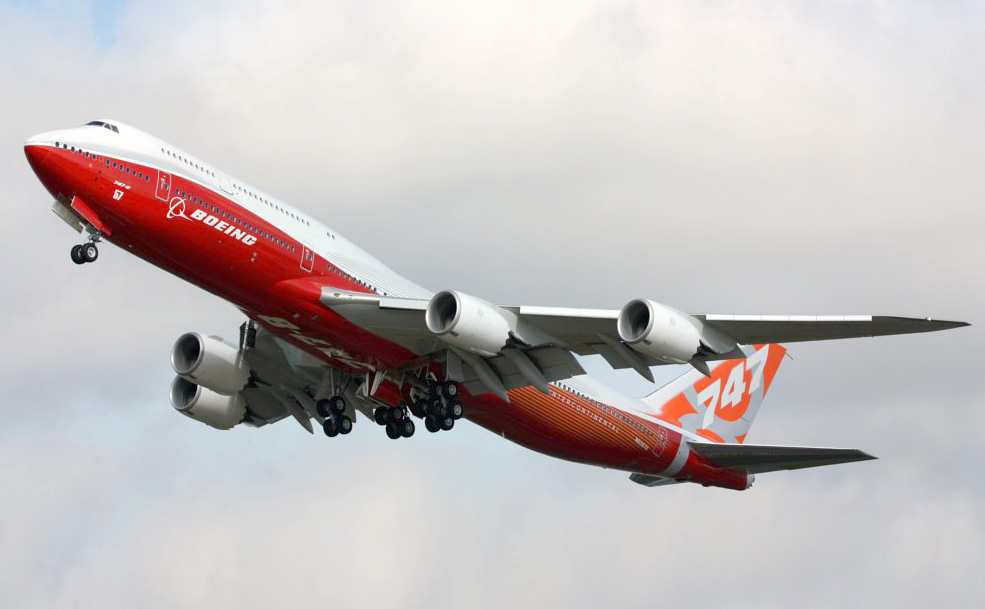
The Boeing 747-8i International is flown by two pilots, and it can carry up to 467 passengers. It is 250 feet, 2 inches (76.251 meters) long with a wingspan of 224 feet, 5 inches (68.402 meters), and height of 63 feet, 6 inches (19.355 meters). The length is an 18 foot, 4 inch (5.588 meters) stretch over the previous 747-400. The leading edges of the wings are swept aft to 37.5°. The total wing area is 5,960 square feet (553.7 square meters). The airliner has an empty weight of 485,300 pounds (220,128 kilograms), and maximum takeoff weight of 987,000 pounds (447,696 kilograms).
The 747-8i and -8F freighter are each powered by four General Electric GEns-2B67 high bypass turbofan engines. These are dual-rotor, axial flow engines with a single fan stage; 13-stage compressor section (3 low-pressure and 10 high-pressure stages); and an 8-stage turbine (2 high- and 6 low-pressure stages. The fan has a diameter of 104.7 inches (2.66 meters). Each engine weighs 12,396 pounds (5,623 kilograms) and produces 66,500 pounds of thrust (295.8 kilonewtons).
The 747-8i’s cruise speed is 0.855 Mach (490 knots/564 miles per hour/908 kilometers per hour), and its maximum speed (VMO) is 516 knots/595 miles per hour/956 kilometers per hour, and the maximum Mach number (MMO) is 0.9 Mach. The service ceiling is 43,100 feet (13,137 meters). With full fuel, 63,034 U.S. gallons (238,610 liters), its range is 7,730 nautical miles (8,896 statute miles/14,316 kilometers).
N6067E was sold to the State of Kuwait 11 March 2012, and re-registered as 9K-GAA.
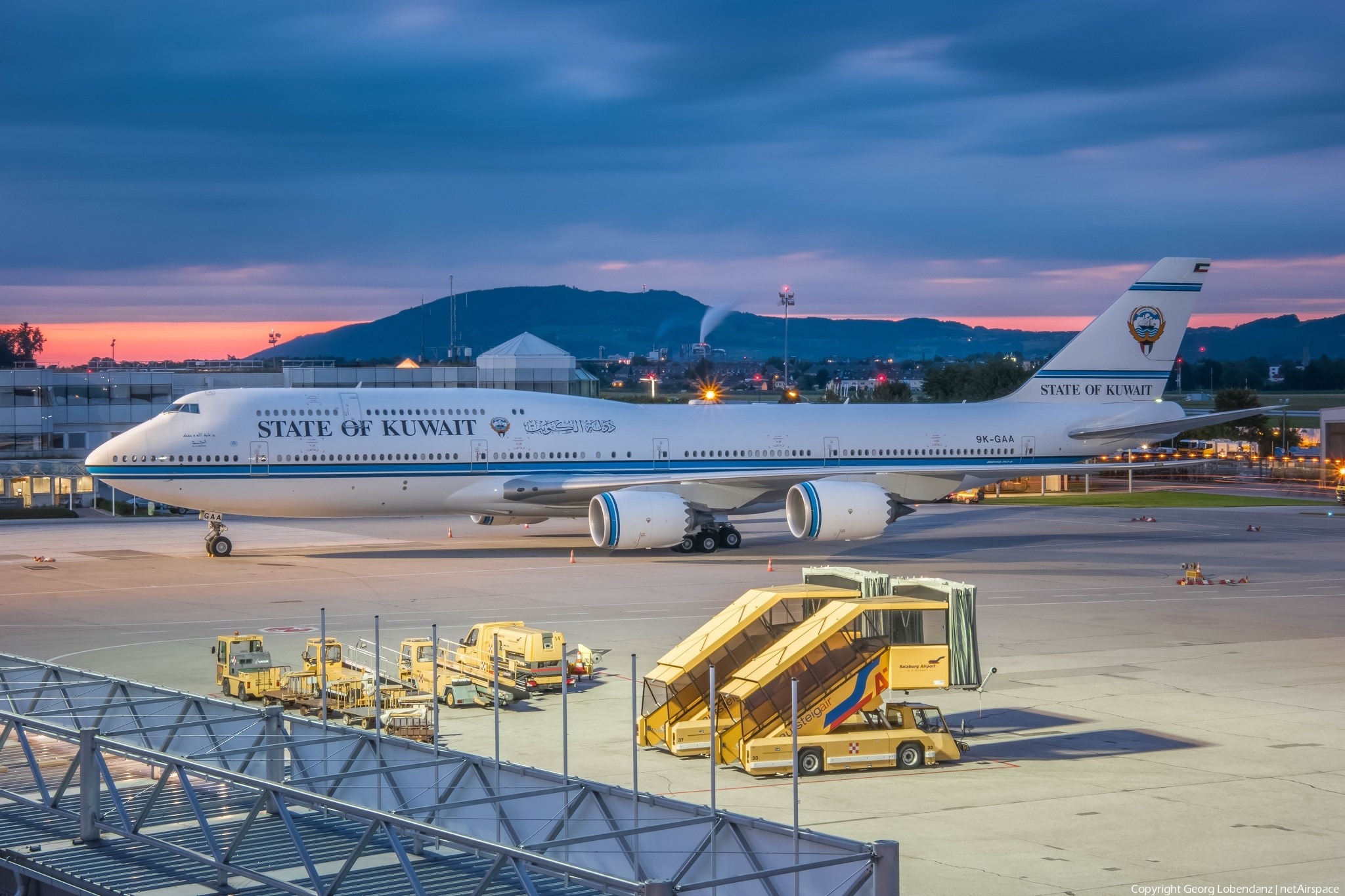
© 2023, Bryan R. Swopes
